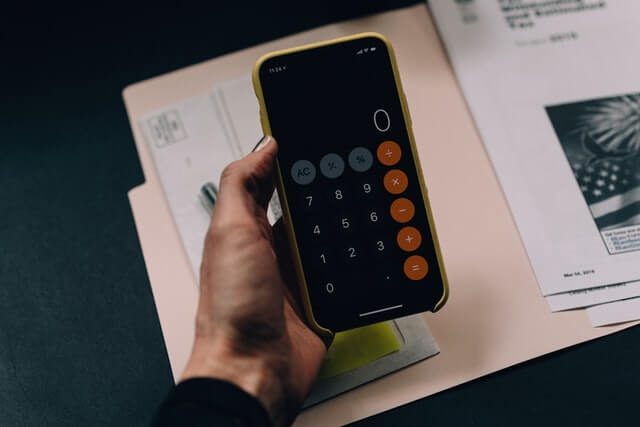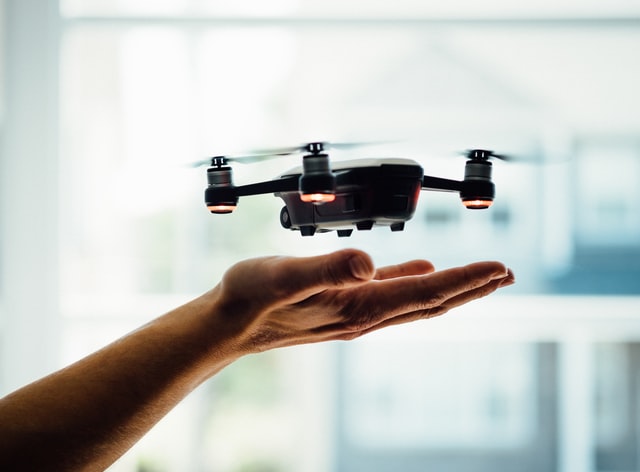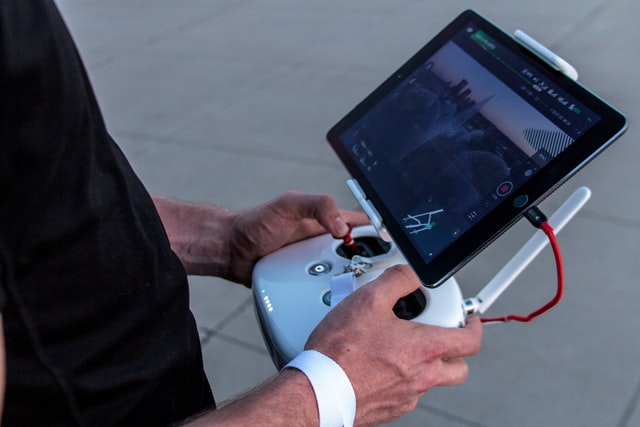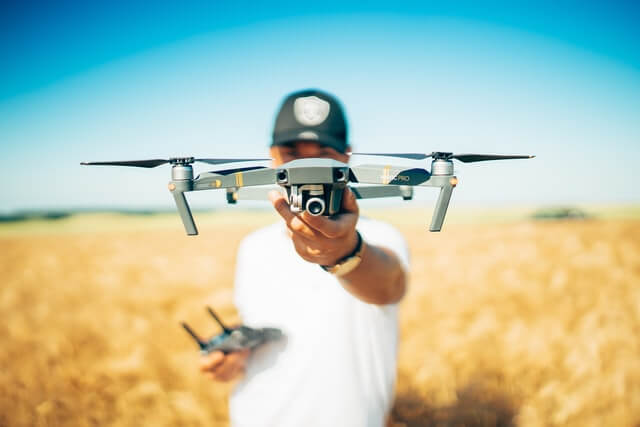Are you in the drone market?
You’ve been planning for a long time to buy your first drone, and now the time has come! After a lot of research, you have finally decided which model is right for you.
However, it’s very common that after buying your new drone you will regret not having waited a bit more or spending a little less on certain aspects. For drone enthusiasts buying a drone shouldn’t be done in haste without taking into account some very important factors about the product.
Commercial drones are becoming increasingly popular, and it’s no wonder why. They offer a unique and fun flying experience, and they can be used for all sorts of purposes, from photography to delivering packages.
Related: Best Drones Under $500 | Powerful Drones Under $200 | Drones Under $1000
If you’re looking to buy your first drone, or even if you’re just curious about what’s on the market, this guide is for you. In it, we’ll walk you through what to look for when buying the right drone.
We cover different types of drones available, the features you should look for when buying one, and how to get started with using your new drone. Here is a complete guide on how to buy a drone for yourself in 2022.
Let me remind you that any type of drone flying comes with its own set of risks and dangers that must be respected at all times. If you don’t know how to fly a drone properly, go learn before ever doing so. It’s also important to read up on all local laws about buying and using drones because some countries have their own specific rules and regulations.
One thing I can say is that whatever your budget or level of experience is there’s a drone out there for you. Trust me, I have been addicted to multi-rotors ever since the first time I flew one and nearly crashed it into a tree.
- Things to Consider Before Buying a Drone
- Bottom Line:
- Frequently Asked Questions (FAQs)
Things to Consider Before Buying a Drone
➤ Decide your Budget

There are literally dozens of different types of drones available, ranging from $25 all the way up into the thousands of dollars range. For most hobbyists, it’s best to aim for something within the $100-$300 range. However, your budget will have a direct impact on the type of drone you chose.
If you’re on a tight budget, simply set your price and don’t go over it.
Set aside some time to pick out the top drone within your price range. To help save yourself from having buyer’s remorse, spend at least an hour reading up on different drones before making your purchase.
➤ Types of Drones – with varying capacities
1. Toy-Grade Drones
These drones can be controlled via an app on your smartphone or tablet. They usually have HD cameras to take HD pictures and videos from the air or they can connect with your phone to control it themselves. Flight times are very short ranging from 5-10 minutes at best. Some will include extra propellers allowing you to change them in case one crashes or gets lost. The price range for these drones is around $50-$100, but you can also buy them used even cheaper.
2. Personal/Consumer Grade UAVs
These are larger in size and include a controller which you use to maneuver the drone manually with 2 joysticks that transmit signals to the drone’s transmitter allowing you to take control of it without using your smartphone.
They usually have upgraded HD cameras for taking better quality pictures and videos that rival what professionals can do at times during flight when taking into account camera angles, lighting conditions, etc.
Flight time ranges from 10-20 minutes depending on how long it takes you to get familiar enough with handling such a large-sized UAV (you don’t want to crash and ruin the drone so you take it slow at first until you feel comfortable). The price range for these drones is around $500-$1000+ depending on the kind of features they have if it has a camera or not, and their size. There are 3 different sizes: small (1-3 pounds), medium (4-7 pounds), and large (8+ pounds) with their prices increasing as they get bigger.
3. Professional Grade UAVs
These drones are classified as either FPV or non-FPV which stands for First Person View or Non-First Person View respectively.
Professional grade drones come ready to use providing all the necessary equipment such as batteries, controllers with the transmitter, charger, etc. They usually do not come with a camera pre-installed leaving the best choice up to you which is fine because many professionals prefer using their own high-quality camera.
These drones can range anywhere around $1000+ depending on how much equipment they have and what kind of UAV it is.
FPV and non-FPV are all different kinds of UAVs that need more explanation so let’s get into that.
FPV Drones: FPV UAVs are specially made for professional-grade uses by anyone who wants top-notch photos/videos from the air while controlling them in real-time through goggles that show exactly what the drone sees. This provides an experience similar to actually being there at the location, but without any possible risks involved when flying FPVs manually which can be difficult unless you are an experienced drone pilot.
Non-FPV Drones: Non-FPV drones are ideal for people who want to take pictures/videos from the air which are already mounted with a camera ready to use right out of the box, providing excellent HD footage at all times which you can’t get with FPVs unless you install your own high-quality camera. These drones usually have very long flight times ranging anywhere between 20 minutes up to an hour+ depending on how big the battery is that comes included when purchased new.
➤ Drone Stability

When you are looking for a drone, stability should be one of your top priorities. Drones that are not stable can be hard to control, which can lead to crashes and damage. There are a few things that can influence drone stability, so here are some pointers on how to pick a drone that is steady:
1. Look for drones with three or more propellers. Drones with more propellers are more stable than those with fewer propellers.
2. Consider the weight of the drone. Heavier drones are less stable than lighter drones.
3. Choose drones with motors located in the center of the frame. This will help to keep the drone balanced and stable.
4. Choose a drone with more powerful motors. This will make it easier to control the drone in high winds and other difficult conditions (like when you are learning).
5. Check the camera resolution, but consider that this is not related to stability directly. You can still get stable video footage shot in 4K from a cheap beginner drone.
➤ Transmitter Range & Battery Life
The range of the transmitter is how far away from your controller (the thing you hold in your hands) can be while still controlling the drone effectively. The battery life of most modern drones is about 10-15 minutes, so if you want to fly for longer than this, you will need additional batteries or look for a drone that can hold a larger battery.
➤ Controller Type

There are three different types of controllers that you can buy with your drone. These are:
Standard transmitter – This is the most traditional type. It includes a radio controller and an onboard screen to see what your camera sees. If you fly FPV (First Person View), this will show you a close-up view of the ground so you can fly safely, but otherwise, it does not provide a lot of benefits.
Remote control – This option does not include an onboard screen like the standard transmitter, but it does give you a better range because there is no wifi or Bluetooth interference to slow it down.
Tablet controller – Using technology similar to smartphones, tablet controllers pair with your phone to display live video from the drone. This gives you a broad, panoramic view of your surroundings, and also allows you to control the drone with virtual joysticks.
➤ Drone Software
The software that is installed on a drone refers to the operating system that runs the electronics. The majority of modern drones run on Linux, which is open-source and free software. The future of this type of program is exciting, both in terms of creating new applications and firmware upgrades, so double-check to see whether the software has been updated recently before purchasing any particular model or brand (particularly if it’s a prior model).
Built-in mobile apps are becoming increasingly popular as part of drones lately because they allow users easy access to their video feed and other important flight data. Some popular apps include:
DJI GO – This app is for all of the drones produced by DJI and allows users to access and download videos and photos from their flights, as well as edit them on the go.
YUNEEC pilot – The YUNEEC pilot app gives users access to an FPV (First Person View) video feed via their phone or tablet. It does not provide any additional functionality like the other apps, however, it is a cheaper option if you don’t want or need those features.
WiFi – Many modern drones have built-in WiFi chips that allow them to stream live HD video wirelessly back to your device. They also allow you to control the drone from a distance.
➤ Register your Drone
Registering your drone is important for a few reasons. By registering your drone, you are creating a record of ownership in the event that it is lost or stolen. Furthermore, registering your drone with the FAA allows you to take to the skies in specific places and informs you of any new rules or restrictions that could affect your use of the aircraft.
To register your drone, you will need to provide some basic information, including your name, mailing address, and contact information. You will also need to provide the make and model of your drone, as well as its serial number.
➤ Warranty of Drone
It is important to consider the warranty that comes with it. Many drones come with a warranty of one year or less. You should make sure that you are aware of the warranty before you purchase a drone. Some drones also come with a guarantee that the manufacturer will replace the drone if it is lost or damaged.
➤ Flight Capabilities
Some drones come with advanced flying capabilities such as “follow me” or “orbit around me.” If these features are important to you, it is best to search for a drone that offers them. This way, you can record yourself without having to worry about controlling your drone at the same time!
➤ Where to fly? Resources
So you’ve got your new drone and you’re itching to take it for a spin. But where’s the best place to fly it? Unfortunately, there are no simple answers. Every location has its own set of rules and restrictions governing drone use, so it’s important to do your homework before taking your new toy out for a spin.
Here are a few resources to help get you started:
- The Federal Aviation Administration (FAA) website has a comprehensive list of regulations governing drone use in the United States.
- The Bureau of Land Management (BLM) website has information on which areas of public land are open to recreational drone use.
- AirMap is a free service that provides real-time information about drone and airspace restrictions in the United States.
- Flyforfun has a list of drone no-fly zones mapped out for you, although it is not 100% accurate or complete.
Bottom Line:
Drone technology is rapidly evolving, so it’s important to do your research and wait for the right time to buy the right drone. Make sure you know what you need your drone for and what features are most important to you. Also, be aware of the different types of drones on the market and their prices. Do not purchase a cheap drone only to find out that it doesn’t have the features you need or that it breaks easily. Wait until you can afford a quality drone that will give you years of enjoyment.
Are there any other factors that are important to you when considering a drone? Let us know in the comments below!
Frequently Asked Questions (FAQs)
Q: Should you buy a drone?
A: There are many reasons to buy a drone. Some people buy drones to capture unmanned aerial vehicle footage or photos, while others use them for racing or recreational purposes. Some people even use drones to deliver packages.
Ultimately, the decision of whether or not to buy a drone depends on your needs and what you plan to use it for.
Q: Is buying a used drone a good idea?
A: A used drone can be a great purchase for someone who is looking to save money and doesn’t mind not having the latest and greatest technology. There are many reasons why people might want to buy a used drone. Some people might want to save money, while others might not have the funds to purchase a brand new drone.
Q: Is it worth buying a drone in Australia?
A: There are many reasons to buy a drone in Australia. Some of the most popular reasons include using drones for photography, using drones for recreation, and using drones for search and rescue missions.
Q: Do you need a license to fly a drone with a camera?
A: A license is not needed to fly a drone with a camera, but there are certain restrictions you must follow. For example, you cannot fly a drone within 5 miles of an airport, and you must keep the drone in your line of sight at all times. You can find more information on the Federal Aviation Administration website.
Q: Are drones with cameras illegal?
A: Cameras mounted on drones are becoming an increasingly popular way to capture aerial footage, but the use of drones for this purpose is not currently legal in all jurisdictions.
Q: Why it is illegal to fly drones?
A: Drones are aircraft that do not have a pilot on board. They are controlled by someone on the ground. The use of drones is regulated by the Federal Aviation Administration (FAA). There are a number of reasons why it is illegal to fly drones. One reason is that they can interfere with aircraft traffic. Another reason is that they can be dangerous to people and property.

